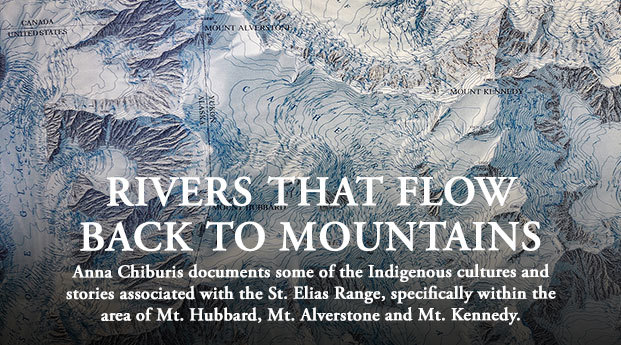Pandora’s Box: The Brief, Brilliant Life of Kei Taniguchi
In 2009 Japanese alpinist Kei Taniguchi became the first woman to receive a Piolet d’Or for her first ascent of the Southeast Face of Kamet (7756m), with Kazuya Hiraide. During the final years of her life, Taniguchi continued to explore challenging new routes, while hinting at a mysterious personal quest. Piecing together diary entries and interviewing family and friends, her biographer Akihiro Oishi tries to see inside what Taniguchi called “the Pandora’s box.”
![Kei Taniguchi training on Mt. Hotaka (3190m), Japan, December 2014. [Photo] Junji Wada](https://dev.alpinist.com/wp-content/uploads/2023/09/kei-taniguchi-1-930x620.jpg)
![Paragot receiving the Piolets d'Or Lifetime Achievement (aka Walter Bonatti) Award in 2012. Rossana Podesta, Bonatti's partner of 30 years, is on the right. [Photo] Courtesy of Pascal Tournaire](https://dev.alpinist.com/wp-content/uploads/2023/09/robert-paragot-1-930x620.jpg)
![Denali (20,310') in the Alaska Range. [Photo] Bradford Washburn Collection, Museum of Science](https://dev.alpinist.com/wp-content/uploads/2023/09/a67-wired-1-930x620.jpg)
![The author's father, Ricardo Cholo, in Cogua, Colombia, January 2018. [Photo] Ana Beatriz Cholo collection](https://dev.alpinist.com/wp-content/uploads/2023/09/a67-tcl-the-unclimbed-1-930x620.jpg)
![[Cover] Turn Around Time: A Walking Poem for the Pacific Northwest. David Guterson. Illustrations by Justin Gibbens. Mountaineers Books. Hardcover, 144 Pages. $21.95.](https://dev.alpinist.com/wp-content/uploads/2023/09/turn-around-time-1-930x620.jpg)

![The Pugilist at Rest (5.10 A3 M5) follows the long center rib in the middle of the photo. The Wilford Couloir is the gully just to the left. [Photo] Mark Wilford](https://dev.alpinist.com/wp-content/uploads/2023/09/pugilist-1-930x620.jpg)
![Jack Tackle on Pitch 11 of A Pair of Jacks/Arctic Discipline, Mt. Kennedy. [Photo] Jack Roberts](https://dev.alpinist.com/wp-content/uploads/2023/09/arctic-discipline-1-930x620.jpg)
![Wendy Teichmann, Andrea Rankin, Gertrude Smith and Helen Butling assemble at camp as they prepare for an attempt on the unclimbed Mt. Saskatchewan in 1967. [Photo] Courtesy Andrea Rankin](https://dev.alpinist.com/wp-content/uploads/2023/09/mt-saskatchewan-1-930x620.jpg)
![The north buttress of Mt. Kennedy as seen during the 1935 National Geographic Society Yukon Expedition. At the time, Bob Bates wrote that he hoped the peak would be called Mt. Washburn. It was known as East Hubbard until it was renamed for President Kennedy in 1965. In his years as director of the Boston Museum of Science, Washburn hung an enlarged version of this photograph on his office wall. [Photo] Bradford Washburn, Bradford Washburn collection, Museum of Science](https://dev.alpinist.com/wp-content/uploads/2023/09/a67-mpessay-rivers-flow-back-1-930x620.jpg)